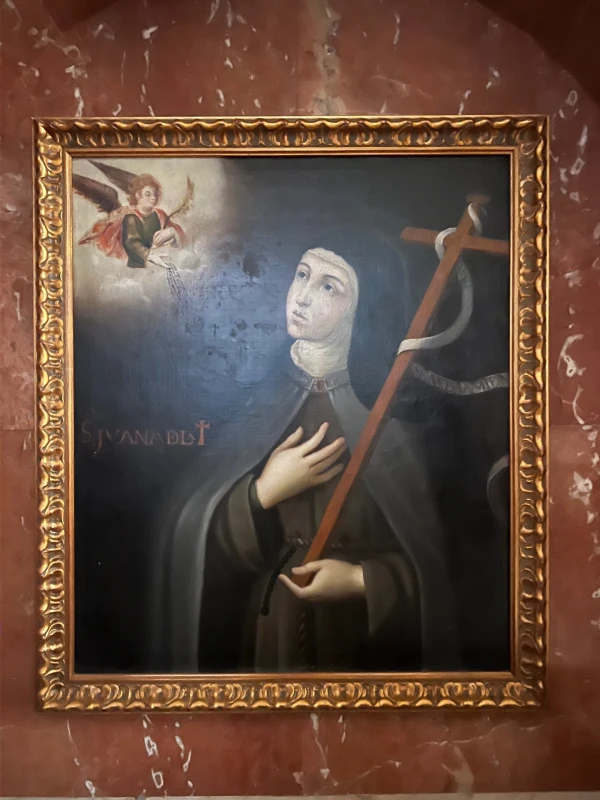“They called Juana’s room the chamber of angels and they said that a staircase must have been made from it to heaven because of the number of saints who went up and down to visit her.”
The “blessed beads” of Saint Joan
“The blessed beads of Saint Juana are the most important chapter of her life,” says Fernando Prieto.
These were the times of Erasmus of Rotterdam and there were almost no blessed accounts from the Vatican. For this reason, Juana ordered her nuns to gather the beads from her strings and rosaries and to also ask her relatives and neighbors for them.
“He asked them to fill a wooden chest that he had prepared. After closing and locking it, Juana gave it to the oldest nun and subsequently entered into an ecstasy that lasted three days.”
The nuns, curious, opened the chest and saw that there was nothing: the beads had disappeared. “There are several paintings where this scene is represented,” says Prieto.
“Once Juana comes to her senses and gives the order to open the box, the nuns saw that the beads and rosaries were there. A perfume began to come out of the furniture that flooded the convent for several days.”
Then, Juana said: “My angel, in his goodness, has seen fit to take the rosaries to heaven, he has deposited them in the most sacred hands of our Lord Jesus Christ, who has blessed them and granted them an infinite number of gifts and virtues, and this smell that you are smelling is the smell of the most holy hands of our Lord Jesus Christ”.
“The nuns began to separate the rosaries and distribute the beads. It was soon shown that they have gifts against the devil, illness, sadness or depression. There are numerous books documenting these miracles. In fact, from the Vatican they asked for a study of the accounts and also from the University of Alcalá de Henares. Even two pontiffs came to ask Saint Joan for an account.”
How is Saint Joan represented?
In the paintings and images, Saint Joan is represented with a cross and the phylactery with the text: “What do I get from me, if not from you, my God?”. It also usually appears with a pot or vase with flowers from which several souls emerge from purgatory and an angel with rosaries.
They find his body incorrupt
Juana de la Cruz died with a reputation for holiness, coincidentally, on May 3, 1534 and was buried at the door of the communion room. “After her death, there were more than 60 nuns, they had houses and land in her possession,” Prieto highlights.
Years later, a girl named Marina, daughter of the counts of Puebla, played with the dirt near the monastery because, she claimed, “it smelled very good.”
It was then that they unearthed her and found her body incorrupt and flexible, with her habit in perfect condition. Seeing this phenomenon, they took it out of her tomb and put it in a wooden box that was deposited in the nuns’ upper choir. “On some occasions they would take her out on a throne and place her greeting all the people during the processions.”
Deterioration arrives: the looting of the French and the fire of the Civil War
In 1810, the French arrived at the monastery and stole everything in their path, including the original cross that the Virgin nailed to the ground next to Saint Joan, which was covered in silver. Later, the convent began to lose fame,” laments Fernando Prieto in statements to ACI Prensa.
20 years later, came the confiscation of Mendizabal and Madoz. The few nuns who remained lost the land they owned and survived by selling milk and teaching classes to the town’s children.
“But the worst comes with the Civil War. With the arrival of the militiamen, four nuns stayed in Cubas and eight in a woman’s house in the Salamanca neighborhood of Madrid, where the concierge denounced them and took them to the San Isidro meadow, where they were raped and murdered.”
“These women are martyrs,” he remarks. After the convent was sacked, they set it on fire and it burned for more than 30 days.
At the end of the war, the four remaining nuns came to pray over the remains of the convent and most of them lost their hope, overcome by hopelessness.
However, one of them reminded them that the Virgin Mary promised that the sanctuary would be “until the end of time” and that, according to the documents, the Mother of God herself told Saint Joan: “This house is mine and I cannot forget it, this place is mine, I cannot forget it and I do not want to stop visiting it.”.
On May 3, 1994, Juana’s body was found, which was no longer incorrupt. After the passage of the French, her head was divided into 68 pieces. She is currently buried in the arch where she always was with some of her relics, among them a Byzantine cross that Cardinal Cisneros gave her and with which Juana worked miracles of healing.
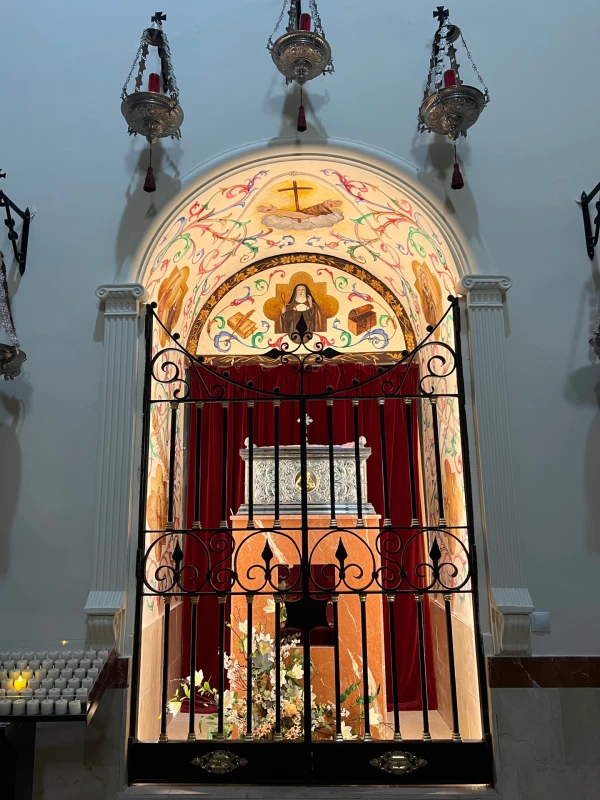
Saint Joan canonization process
The first of them was not approved because Pope Urban VIII changed the canonization norms and established the current ones, ending the immemorial cult. “This said that if 100 years after her death the people hailed her as a saint, she would be canonized directly. However, the changes came when 96 years had passed since Juana’s death.”
Regarding the second process, it should be noted that Juana de la Cruz “preached a lot, but everything was lost.” For this reason, a Bishop ordered that everything be written down and for this, Juana chose two nuns, “who could neither read nor write.” One of them was Sister María Evangelista, who became abbess of the convent.
“They heard Juana’s sermon and even though they had no education, they wrote everything in beautiful handwriting.” After two years they created a book under the title of “conhort” (comfort), to comfort the faith of the simple. “There are 72 sermons that form a complete liturgical cycle, in which Saint Joan also makes a beautiful theatrical recreation of heaven.”
However, Philip II took the book to the Escorial, without the nuns knowing. The second canonization process, known as the Toledo process, was interrupted because the Vatican requested the original book.
On March 18, 2015, Pope Francis again signed the decree of heroic virtues of Saint Joan and is currently in her third canonization process.
The reconstruction of the sanctuary and its current state
Little by little, after having lost everything, the monastery was rebuilt thanks to the generosity of many. In 1998, Fernando Prieto arrived at the sanctuary invited by a friend.
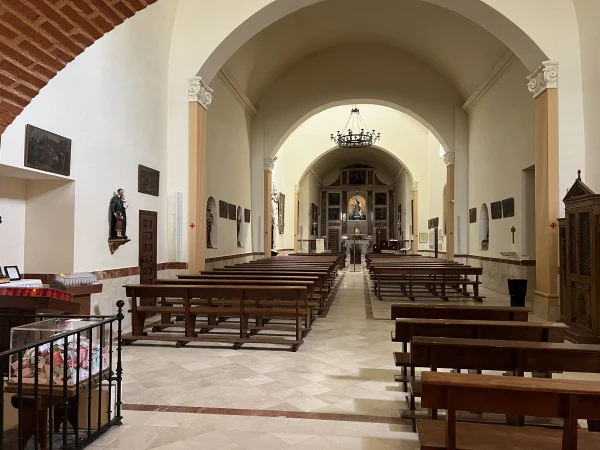
“I am very curious, I saw a copy of the Toledo trial, in which there are documents with many witnesses telling very interesting stories,” he tells ACI Prensa.
During the last few years, thanks to this healthy curiosity, he has found, among many other things, the tomb of Fray Pedro de Santiago, the vicar and confessor of Santa Juana.
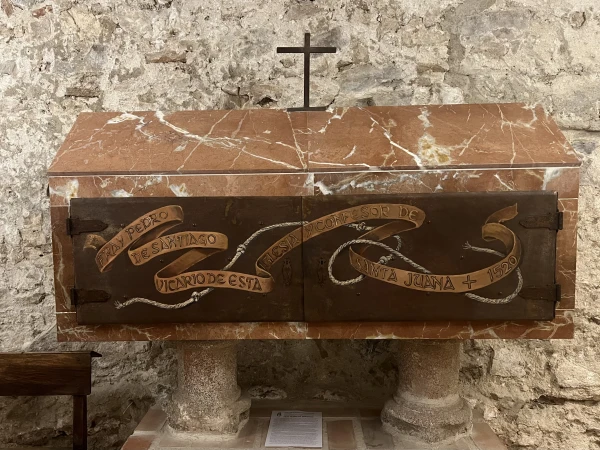
Furthermore, thanks to the writings, in 2002 he found the marble altar built in the exact place where the Virgin Mary nailed the cross and the primitive church.
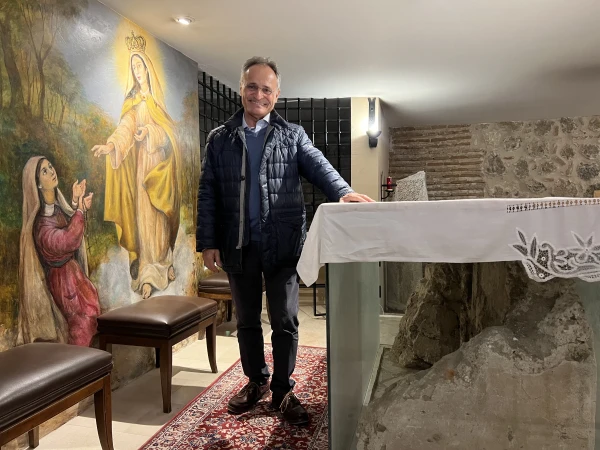
“We decided that it had to be fixed, and we did so with the permission of the Mother Superior. Wherever the Virgin has been, there is always her mystical presence. The Virgin is always here and that is why we must preserve it.”
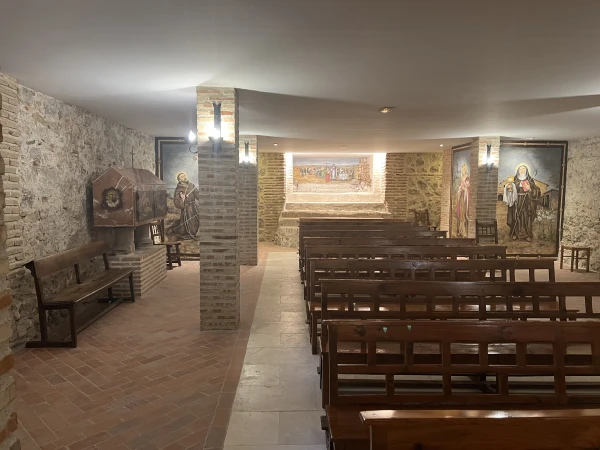
In addition to everything mentioned, Fernando Prieto was also looking for a “white stone” for which the nuns felt a special affection: “The documents say that Juana was confessing behind a wall while Mass was being celebrated and, upon noticing that the moment of the consecration, he knelt behind the wall. At that moment, the wall opened like a channel and then closed again.”
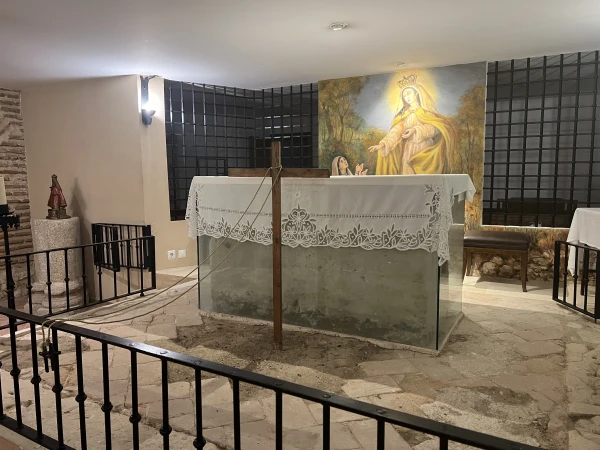
“The wall was made of black stones and, as proof of the miracle, one of those stones remained white and divided into three parts in the shape of a cross,” he says.
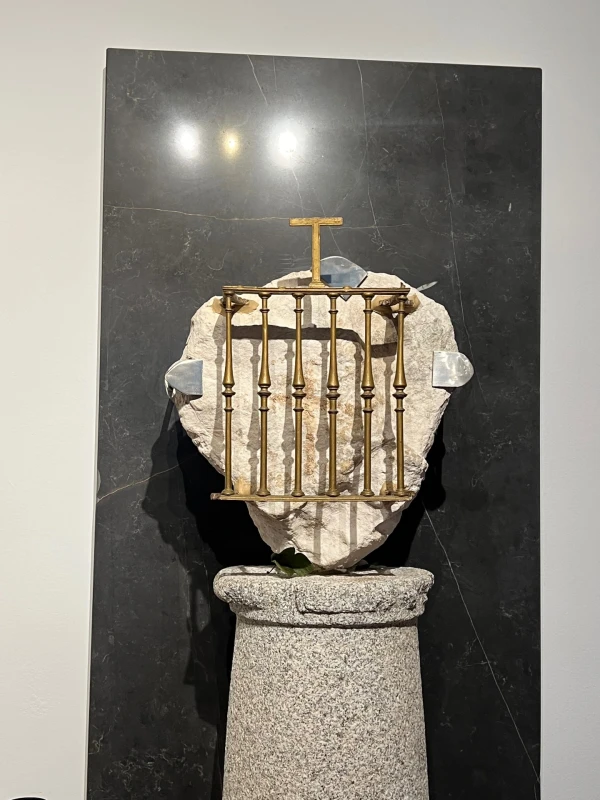
Saint Joan’s Oratory
Something similar happened with what they called the oratory of Santa Juana. Thanks to the fountains, in 2022 Fernando Prieto brought this small chapel back to life.
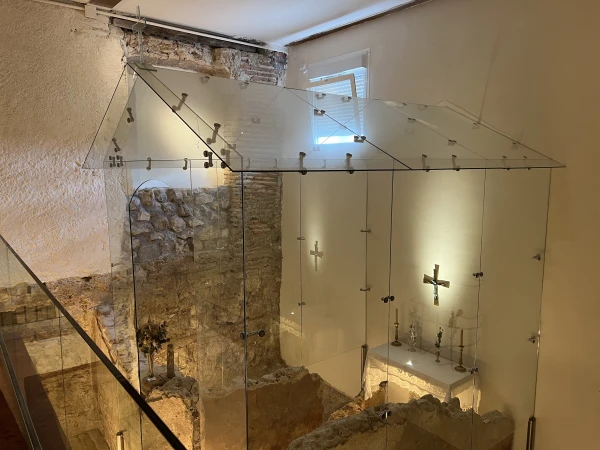
“Only people who are sick come here, it is a very special place. A few days ago a man who had recently visited the chapel came to see me. He was very sick, he was going to die. He told me that after praying before this altar, the doctors told him that he was completely cured.
Likewise, the Poor Clare nuns, who currently live in the convent, assure that many people have been completely cured after finally drinking the water from the fountain located at the entrance.
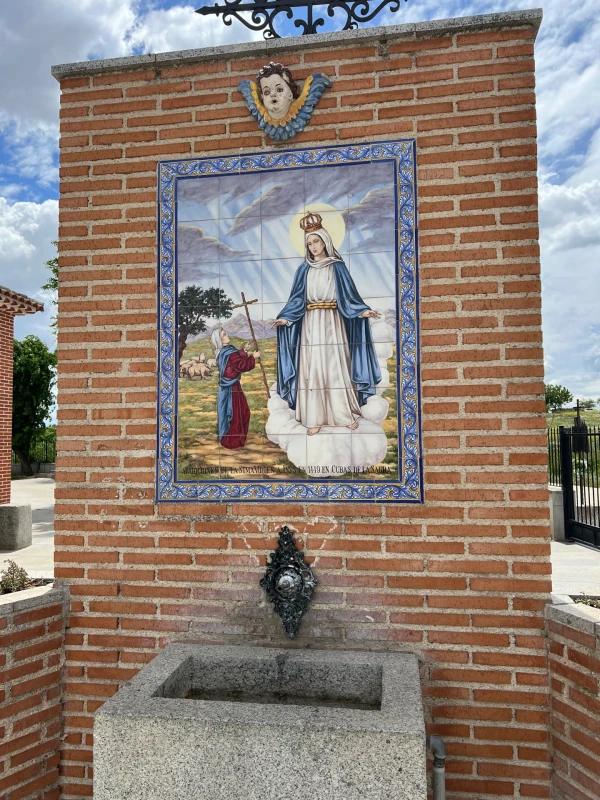
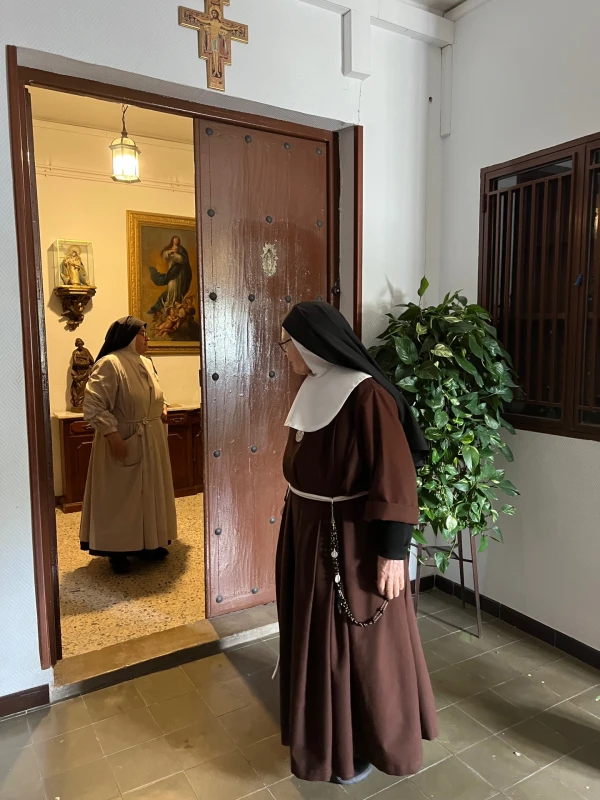
“You can’t imagine the things that still happen here. And the best thing is that there is still a lot to discover,” says Prieto.
